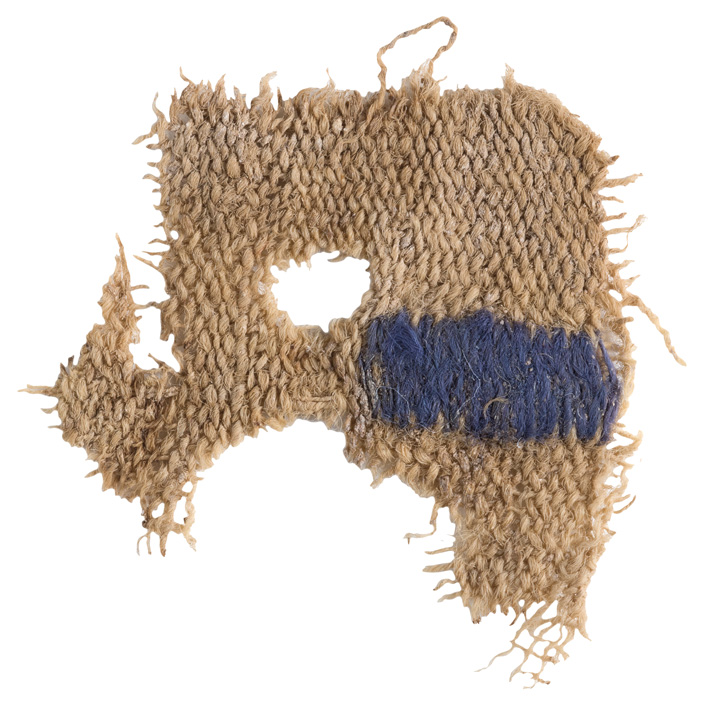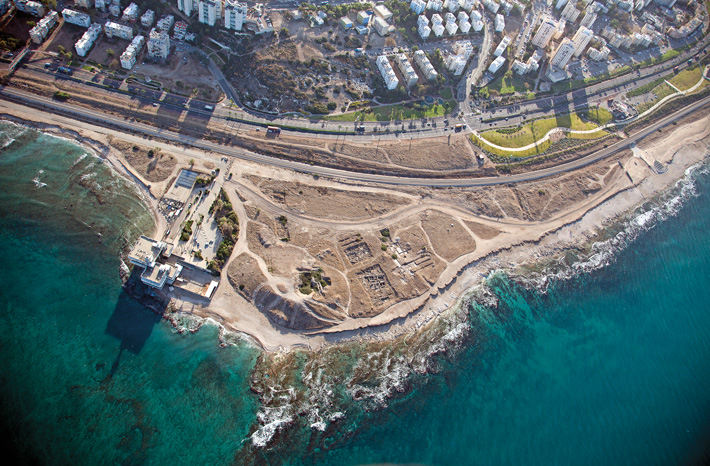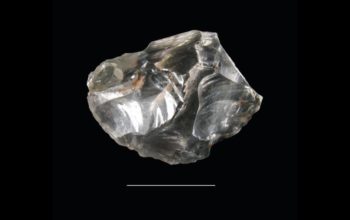Archaeologists discovered new evidence about a robust dye industry that endured on the Mediterranean coast for millennia.
The following written content by Sara Toth Stub

Not far from the foot of Mount Carmel and the industrial port city of Haifa on Israel’s Mediterranean coast sits a grassy mound dotted with ruins of buildings and walls, the accumulation of more than three millennia of settlement. From the top of the mound, or tel, a view of the sea stretches out. Birds and fishermen perch on the numerous rocks that dot the shallow water, which is navigable only by the smallest of boats. Since the first excavations in the 1960s, archaeologists have found the site, called Tel Shikmona in Hebrew, or Tell es Samak, “Hill of the Fish,” in Arabic, curious. They couldn’t understand why, beginning in the Late Bronze Age (ca. 1600–1200 B.C.), through the Iron Age (ca. 1200–550 B.C.), and continuing more than 1,000 years into the Byzantine period, people would settle somewhere with such a rocky, shallow coastline and no harbor, a place where farming and trade would have been difficult. But now, 50 years later, archaeologists examining artifacts from Tel Shikmona stored in a local museum have determined that its residents used the location to their advantage in an entirely different, and very lucrative, way.
 (Ken Feisel)
(Ken Feisel)
Among the stored artifacts and original handwritten documents from digs at Tel Shikmona in the 1960s and 1970s, archaeologists Golan Shalvi and Ayelet Gilboa, both of the University of Haifa, have found dozens of pottery vessels and sherds covered with purple and blue stains, evidence that people were producing a coveted dye using liquid extracted from the glands of murex sea snails at the site. Until now, such evidence from the Bronze and Iron Ages has been limited to scattered pieces of stained pottery and heaps of murex snail shells found at several sites in modern-day Lebanon and Israel. Read more from Archaeology.
Follow other related news stories from News Without Politics
Subscribe to News Without Politics





